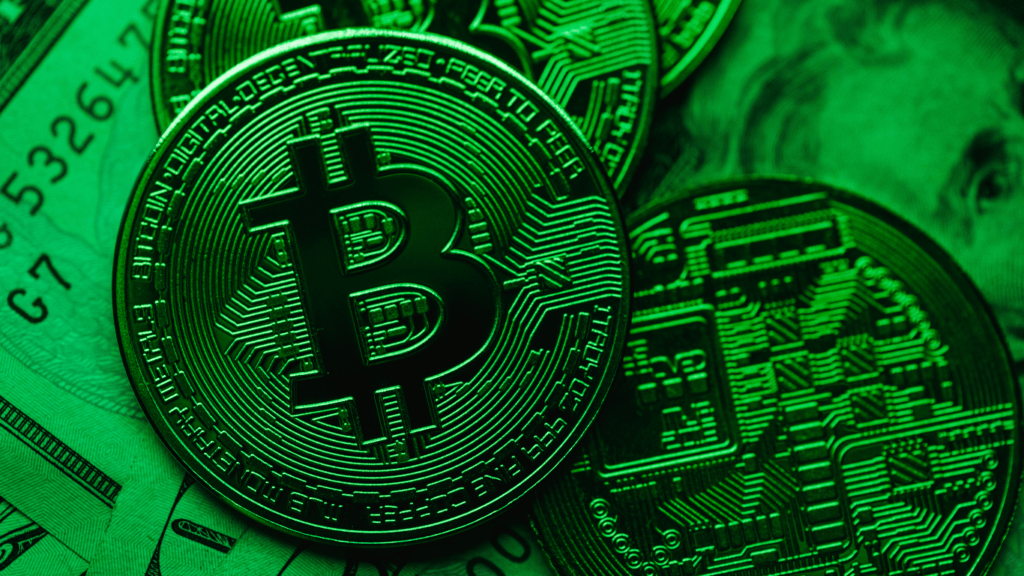As a seasoned blogger exploring the intersection of technology and finance, I’m thrilled to delve into the fascinating realm where crypto and the metaverse converge. Virtual worlds have become the new frontier for digital currencies, revolutionizing the way we perceive and interact with money.
In this article, we’ll uncover how these immersive digital environments are embracing cryptocurrencies, reshaping the landscape of online transactions. With the rise of blockchain technology and the growing popularity of virtual reality platforms, the integration of digital currencies into the metaverse has opened up endless possibilities for users worldwide.
From buying virtual real estate to trading unique digital assets, the metaverse offers a glimpse into a future where traditional financial systems are being reimagined. Join me on this journey as we explore how virtual worlds are embracing the disruptive power of cryptocurrencies.
Exploring the Intersection of Crypto and the Metaverse
Diving into the fusion of crypto and the metaverse reveals a dynamic landscape where digital currencies are seamlessly integrated into virtual worlds. In this immersive digital realm, cryptocurrencies serve as the primary medium of exchange, unlocking unique possibilities for transactions and economic interactions.
The metaverse’s evolution as a decentralized network parallels the rise of digital currencies, fostering a symbiotic relationship that pushes the boundaries of traditional finance. Navigating through the metaverse showcases a thriving ecosystem where users engage in virtual commerce using cryptocurrencies as a universal form of payment.
This revolution in online transactions empowers individuals to participate in a diverse range of activities, from purchasing virtual assets to trading exclusive digital collectibles. As the metaverse continues to expand its digital horizons, the integration of blockchain technology ensures transparent and secure financial transactions, laying the foundation for a new era of economic innovation.
Exploring the metaverse’s integration of digital currencies amplifies the decentralization of financial systems, offering a glimpse into a future where traditional boundaries between physical and digital economies blur. By embracing cryptocurrencies, virtual worlds create a fluid economy that transcends geographical constraints, opening avenues for global participation in a unified digital marketplace.
The synergy between crypto and the metaverse heralds a paradigm shift in how we perceive and engage with financial transactions, heralding a transformative era of digital economic empowerment.
The Rise of Digital Currencies in Virtual Worlds
Exploring the integration of digital currencies in virtual worlds unveils a dynamic shift in how transactions unfold within immersive digital environments. Embracing cryptocurrencies as the primary medium of exchange in the metaverse ushers in a new era of financial interactions, fueling a borderless economy.
Adoption of Cryptocurrencies in Virtual Environments
In virtual environments, the adoption of cryptocurrencies is skyrocketing, revolutionizing the way users engage in commerce and transactions. Cryptocurrencies serve as the lifeblood of these virtual realms, facilitating seamless and secure exchanges of value.
Users can effortlessly purchase virtual goods, invest in virtual real estate, and partake in a spectrum of economic activities leveraging the efficiency and transparency of digital currencies.
Impact of NFTs on the Virtual Economy
Non-Fungible Tokens (NFTs) have emerged as a disruptive force shaping the virtual economy, offering unique digital assets that are one-of-a-kind and verifiably scarce. NFTs enable users to own exclusive virtual items, artwork, and collectibles, transforming the landscape of digital ownership.
Their impact extends to creating new economic opportunities within virtual worlds, where users can trade, showcase, and monetize their digital possessions in a decentralized and secure environment.
Gaming Metaverse: Integrating Cryptocurrencies for In-Game Transactions
Exploring the gaming metaverse reveals a fascinating integration of cryptocurrencies for seamless in-game transactions. In this digital realm, digital currencies serve as the main medium of exchange, facilitating a vibrant ecosystem where users participate in virtual commerce with ease and security.
In virtual worlds within the gaming metaverse, users engage in a variety of activities powered by cryptocurrencies. They can purchase virtual assets, trade exclusive digital collectibles, and even invest in virtual real estate effortlessly. The adoption of cryptocurrencies in these immersive environments is rapidly changing how transactions are conducted, revolutionizing the gaming economy.
The incorporation of Non-Fungible Tokens (NFTs) further amplifies the impact of digital currencies in the gaming metaverse. NFTs have disrupted the virtual economy by offering unique digital assets that possess verifiable scarcity.
Users can now own and trade these exclusive virtual items, including artwork and collectibles, opening up new economic opportunities and reshaping digital ownership dynamics in a secure, decentralized environment.
Decentralized Finance (DeFi) in the Metaverse
Exploring the realm of decentralized finance (DeFi) within the metaverse reveals a landscape shaped by innovative financial structures and digital currencies. In this immersive digital space, DeFi protocols revolutionize traditional financial systems by offering users a decentralized platform for various financial activities.
- Smart Contracts and Automated Market Makers (AMMs): I’ll delve into the utilization of smart contracts in the metaverse, providing automated and trustless financial services. Popular DeFi platforms leverage AMMs to enable users to trade digital assets seamlessly, enhancing liquidity across decentralized exchanges.
- Lending and Borrowing Protocols: Within the metaverse, DeFi introduces dynamic lending and borrowing protocols that empower users to access capital without intermediaries. Users can participate in lending pools to earn interest on their digital assets or borrow cryptocurrencies based on provided collateral.
- Yield Farming and Staking Mechanisms: I’ll discuss the innovative strategies of yield farming and staking, where users optimize their asset holdings to earn rewards or yield on decentralized platforms. These mechanisms incentivize active participation in the DeFi ecosystem, fostering growth and sustainability.
- Governance Tokens and Decentralized Autonomous Organizations (DAOs): The metaverse incorporates governance tokens that grant holders voting rights on platform decisions, fostering a decentralized governance model. DAOs, powered by blockchain technology, enable collective decision-making and community-driven initiatives within the metaverse.
- Cross-Chain Compatibility and Interoperability: I’ll highlight the importance of cross-chain compatibility in the metaverse, allowing seamless interaction between different blockchain networks. Interoperability enhances the efficiency of DeFi protocols, enabling users to access a wider range of assets and financial services.
Embracing DeFi in the metaverse not only revolutionizes traditional finance but also fosters a borderless and inclusive financial ecosystem. By leveraging blockchain technology and digital currencies, the metaverse paves the way for decentralized financial applications that empower users and drive innovation in the digital landscape.
Future Trends and Opportunities in the Crypto-Metaverse Space
Exploring the horizon of the crypto-metaverse landscape reveals a realm brimming with potential opportunities and emerging trends that are set to redefine digital interactions and financial systems. Let’s delve into the exciting prospects that await in this dynamic intersection of cryptocurrency and virtual worlds.
- Embrace of Cross-Chain Compatibility: In the evolving crypto-metaverse, cross-chain compatibility is gaining importance, allowing seamless interoperability between blockchain networks. This trend enhances the efficiency and scalability of DeFi platforms, promoting a more interconnected financial experience.
- Rise of Metaverse Tokens: The emergence of metaverse-specific tokens is designed to optimize user engagement and utility within virtual environments. These tokens streamline transactions and incentivize participation, unlocking new monetization avenues and fostering a vibrant virtual economy.
- Evolution of Virtual Asset Marketplaces: The future of the crypto-metaverse will see significant evolution in virtual asset marketplaces, where digital assets and NFTs reshape ownership dynamics. These marketplaces will empower users to discover, buy, sell, and exchange digital assets seamlessly, enhancing economic value in immersive worlds.
- Emergence of Social Tokens: Social tokens represent a disruptive trend in the crypto-metaverse, blurring the lines between virtual interactions and financial empowerment. Linked to creators or communities, these tokens redefine community-driven economies, creating opportunities for monetization and collaboration.
- Enhanced User Governance and Participation: As decentralized governance models evolve, there’s a growing emphasis on user empowerment through governance tokens and DAOs. This focus enhances participation in decision-making processes, fostering inclusivity and transparency in virtual ecosystems.
The future trends and opportunities in the crypto-metaverse space present a landscape ripe with innovation, collaboration, and transformative potential. By embracing emerging trends and harnessing the power of digital currencies within virtual environments, the crypto-metaverse is poised to redefine the way we engage with financial systems, interact within digital realms, and shape the future of decentralized economies.


 Joselito Huntterly has made significant contributions to Lend Crypto Volt by enhancing its technical foundations. With a background in software development and cybersecurity, Joselito has implemented robust systems to ensure the platform's security and reliability. His expertise in emerging technologies has also helped streamline content delivery, ensuring users receive timely updates and insights. Joselito's dedication to creating a secure and efficient platform is essential for users navigating the dynamic world of cryptocurrency.
Joselito Huntterly has made significant contributions to Lend Crypto Volt by enhancing its technical foundations. With a background in software development and cybersecurity, Joselito has implemented robust systems to ensure the platform's security and reliability. His expertise in emerging technologies has also helped streamline content delivery, ensuring users receive timely updates and insights. Joselito's dedication to creating a secure and efficient platform is essential for users navigating the dynamic world of cryptocurrency.